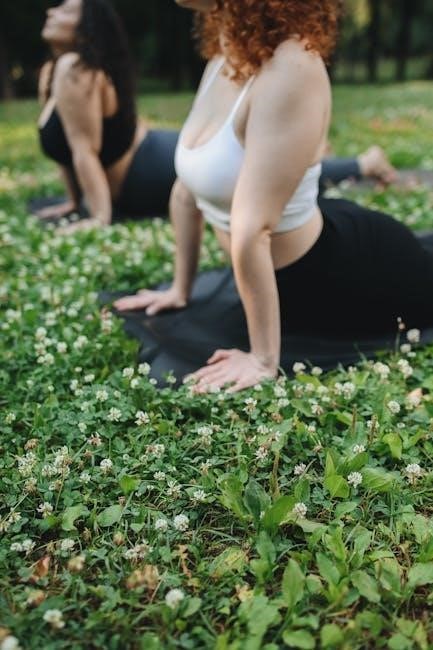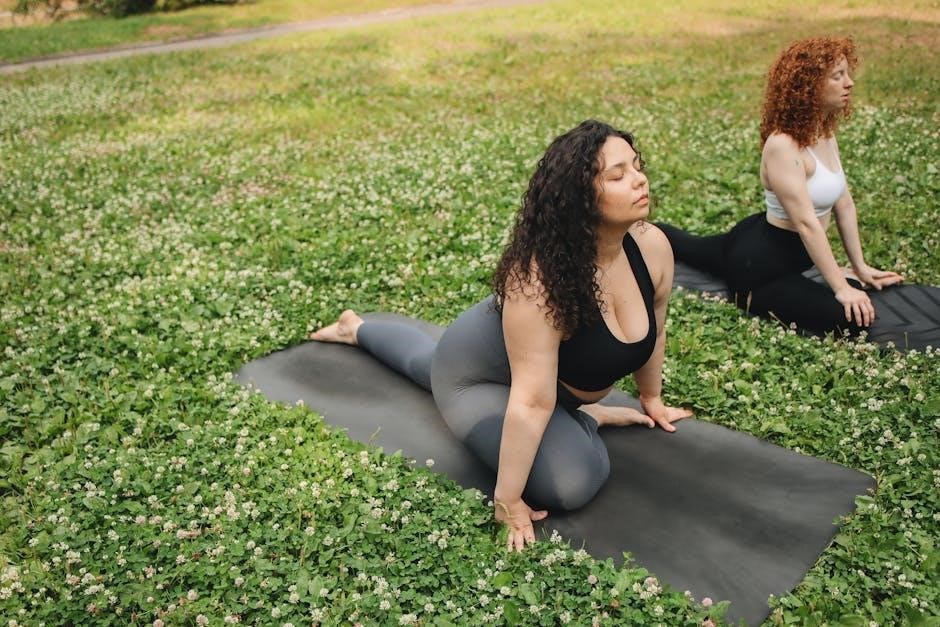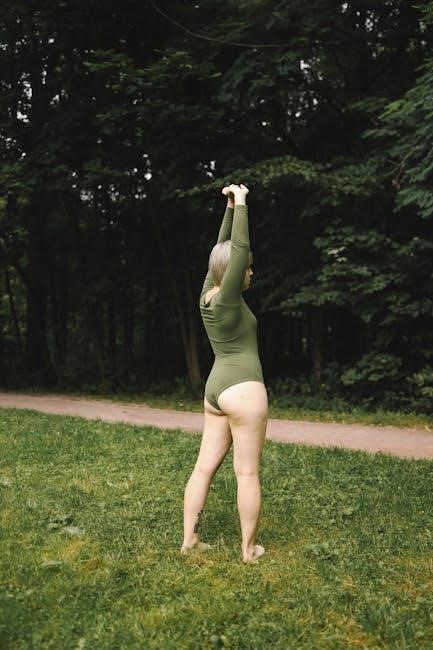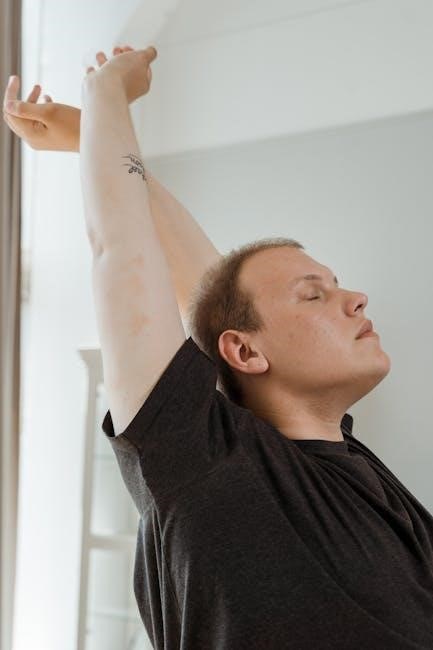Welcome to the world of ear stretching! This guide helps you navigate gauge sizes, millimeters, and inches, ensuring a safe and informed journey to your desired ear size.
What is Ear Stretching?
Ear stretching is the deliberate process of enlarging ear piercings to accommodate larger jewelry sizes. It involves gradually increasing the gauge size of the piercing using specialized tools like tapers or plugs. This practice allows individuals to achieve their desired aesthetic, whether for personal style or cultural expression, while maintaining ear health through careful techniques and aftercare.
Why Use a Size Guide?
A size guide is essential for ensuring proper fit and safety during ear stretching. It helps avoid improper jewelry sizes, preventing discomfort or tissue damage. By understanding gauge, millimeter, and inch conversions, you can track progress and plan gradual stretching effectively. This guide also aids in maintaining healthy healing times and choosing appropriate jewelry for your current size, promoting patience and safe practices.
Key Measurements: Gauge, Millimeters, and Inches
Understanding gauge, millimeters, and inches is crucial for ear stretching. Gauge sizes decrease as numbers increase, with 18g being 1mm and 0g being 8mm. Converting gauge to millimeters or inches ensures accurate jewelry sizing. This system helps track stretching progress, plan next steps, and maintain ear health, making it essential for a successful and safe stretching journey.

Understanding Gauge Sizes
Gauge sizes are standardized measurements for body piercings, with lower numbers indicating larger diameters. This system helps determine jewelry size for safe and gradual ear stretching.
How Gauge Sizes Work
Gauge sizes are inverse, meaning smaller numbers represent larger diameters. For example, a 16g (1.2mm) is smaller than a 14g (1.6mm). This system helps determine jewelry size for safe, gradual stretching, ensuring proper fit and minimizing risks.
Standard Ear Piercing Sizes
Most standard ear piercings start at 18g (1.0mm) or 16g (1.2mm), common for initial piercings. These sizes provide a solid foundation for future stretching, allowing gradual enlargement while promoting healing and minimizing discomfort.
Gauge to Millimeter Conversion Chart
A handy chart converts gauges to millimeters, ensuring precise sizing. For example, 18g=1.0mm, 16g=1.2mm, 14g=1.6mm, and 12g=2.0mm. This guide helps you track progress and choose the next size accurately, making your stretching journey seamless and well-planned.

How to Measure Your Ear Stretching Size
Measure your ear stretching size accurately using a gauge chart and calipers for precise sizing, ensuring safe and effective stretching results.
Tools for Measuring
Use a gauge chart, precision calipers, or a plug gauge to measure your ear stretching size accurately. These tools help determine your current size and ensure proper fit for jewelry.
How to Use a Gauge Chart
To use a gauge chart, compare your jewelry size by aligning it with the chart’s measurements. Ensure accurate alignment and refer to both gauge and millimeter scales for precise sizing, aiding in selecting the next appropriate size for stretching.

Choosing the Right Size
Selecting the right size is crucial for safe ear stretching. Start with standard piercing sizes and gradually increase, using a gauge chart to ensure accurate, comfortable progression.
Initial Piercing Size
Most ear piercings start at 18g (1mm) or 16g (1.2mm), as these sizes are ideal for healing. Piercers often recommend 14g (1.6mm) for the first stretch after initial piercing. It’s essential to wait at least 4-6 months before considering stretching to ensure proper healing and minimize risks. Starting with smaller gauges allows for gradual, safe progression.
First Stretch Size
Your first stretch after an initial piercing typically starts at 14g (1.6mm), as it’s the standard size for safe progression. This size is small enough to minimize discomfort while allowing the ear to adapt gradually. Starting with 14g ensures proper healing and reduces the risk of complications, making it a recommended choice for beginners in ear stretching.
Importance of Gradual Stretching
Gradual stretching is crucial to avoid tissue damage and promote healthy healing. Skipping sizes or rushing can cause tears or blowouts, leading to complications. Allowing time for each size to settle ensures the ear remains strong and resilient, supporting long-term stretching goals safely and effectively for lasting results.
The Ear Stretching Process
Discover the methods, tools, and techniques for a successful ear stretching journey. Learn how to safely achieve your desired size with proper care and attention to detail.
Methods of Stretching
Ear stretching involves gradual enlargement using tools like tapers or plugs. The hand-stretching method is common, while Weights and tapes offer alternative approaches. Each technique requires patience and precision to avoid tissue damage. Professional assistance is often recommended for safety and accuracy. Proper aftercare is essential to ensure healthy results and prevent complications.
Aftercare and Healing
Proper aftercare is crucial for healthy healing. Regularly clean stretched ears with saline solution and avoid tight clothing. Keep jewelry clean and dry to prevent infections. Healing times vary, but consistent care ensures faster recovery. Avoid submerging in water until fully healed. Patience and hygiene are key to maintaining healthy, attractive stretched ears. Follow a routine for best results.
Common Mistakes to Avoid
Avoid rushing the stretching process, as this can cause tears or infections. Never use improper tools or skip aftercare. Ignoring signs of complications, like redness or swelling, can lead to severe issues. Over-stretching too quickly or using low-quality jewelry can result in uneven results or long-term damage. Patience and proper techniques are essential for safe ear stretching.

Safety and Risks
Understanding the risks of ear stretching is crucial. Over-stretching can cause permanent damage or infections. Improper aftercare and using low-quality jewelry can lead to complications. Always prioritize gradual stretching and use sterile equipment to ensure a safe experience.
Risks of Over-Stretching
Over-stretching can lead to severe consequences, including torn lobes, permanent scarring, and infections. The skin may become thin and prone to tears, making it difficult to repair. Excessive stretching can also cause keloids or cysts, which require medical attention. It’s essential to allow adequate healing time between stretches to avoid these risks and maintain healthy ear lobes.
Signs of Complications
Watch for redness, swelling, or increased pain beyond the initial stretching discomfort. Pus or discharge may indicate infection, while warm skin suggests inflammation. If stretching causes bleeding or tearing, stop immediately. These signs signal potential complications that require prompt attention to prevent further damage and ensure proper healing.
When to Stop Stretching
Stop stretching if you experience persistent pain, swelling, or signs of infection. If your skin becomes tight or misshapen, or if jewelry no longer fits comfortably, it’s time to pause. Over-stretching can cause irreversible damage, so prioritize your health and cease stretching when any of these warning signs appear to avoid permanent harm.

Healing Times and Maintenance
Proper care is key to healing. Keep stretched ears clean, avoid tight jewelry, and maintain a routine to ensure healthy, long-lasting results and prevent complications.
Average Healing Time
The average healing time for stretched ears varies from 2 to 6 months, depending on the size and individual healing rates. Factors like proper aftercare and avoiding over-stretching significantly impact recovery. Smaller stretches typically heal faster, while larger gauges may require more time. Patience is crucial to ensure the ear fully recovers before further stretching.
Maintaining Stretched Ears
Maintaining stretched ears involves regular cleaning with saline solution and avoiding tight clothing that may irritate the area. Rotate jewelry occasionally to prevent pressure spots. Keep the area moisturized to promote skin health and prevent dryness. Proper care ensures the stretched lobes remain healthy and visually appealing, supporting long-term results and preventing complications.
Choosing the Right Jewelry
Selecting the right jewelry for stretched ears ensures comfort and style. Opt for materials like UV acrylic or glass, which are safe and durable. Measure your gauge accurately to avoid tight fits. PlugYourHoles.com offers a size chart to help you choose the perfect fit. Proper jewelry selection enhances the appearance of your stretched ears while maintaining their health and integrity.
This guide provides a comprehensive conversion chart for gauges, millimeters, and inches, ensuring accurate measurements and comfort for your stretched ears. Find your perfect fit effortlessly.
Size Progression
Size progression in ear stretching involves gradually increasing the gauge of your jewelry. Start with smaller sizes like 14g (1.6mm) and progress to larger gauges. Use a conversion chart to ensure accurate measurements. Gauge sizes decrease as the diameter increases, so 12g is 2mm, 10g is 2.4mm, and 8g is 3mm. Always stretch slowly and safely to avoid complications. Patience ensures healthy, even results.
Popular Sizes and Conversions
Popular ear stretching sizes include 14g (1.6mm), 12g (2mm), 10g (2.4mm), 8g (3mm), and 6g (4mm). Standard conversions range from 18g (1mm) to 0g (8mm or 1/4 inch). These sizes are widely used for stretching and offer a clear progression for achieving desired ear aesthetics. Always refer to a size chart for accurate measurements and safe stretching practices.
How to Use the Size Chart
Start by identifying your current gauge or millimeter size. Match it to the chart to find equivalent measurements in inches or gauges. Plan your stretching progression, ensuring gradual increments for safety. Use the chart to track your journey and select jewelry that fits perfectly. This tool ensures accurate sizing and helps avoid over-stretching, promoting healthy ear aesthetics.

Frequently Asked Questions
Discover answers to common queries about ear stretching, such as reversing stretched ears, choosing the best jewelry, and understanding the pain involved in the process.
Can Stretched Ears Be Reversed?
Yes, stretched ears can often be reversed, but the process depends on the size and healing time. Smaller stretches (up to 8mm) typically revert quickly, while larger sizes may require surgery. Patience and proper care are essential for successful reversal, ensuring ears return to their natural state without complications.
What Jewelry is Best for Stretched Ears?
The best jewelry for stretched ears includes plugs, tunnels, and rings made from safe, non-irritating materials like glass, titanium, or surgical stainless steel. These materials promote healing and minimize risks of infection. Properly sized jewelry ensures comfort and maintains the integrity of the stretched piercing, allowing for a seamless transition between different gauges and styles.
How Painful is Ear Stretching?
Ear stretching discomfort varies by individual and method. Gradual stretching minimizes pain, often causing mild pressure or soreness. Sudden large jumps can increase discomfort. Starting with smaller gauges and using proper techniques helps reduce pain, ensuring a safer and more pleasant experience throughout the stretching process.
Ear stretching is a rewarding journey when done responsibly. Use size guides to ensure gradual progress, prioritize aftercare, and embrace patience for healthy, stunning results.
Final Tips for Successful Ear Stretching
Always use a size guide for accurate measurements. Gradual stretching prevents damage. Start small and progress slowly. Allow healing time between stretches. Choose high-quality jewelry for comfort. Keep your ears clean. Be patient and listen to your body. These practices ensure a safe, successful journey to your desired ear size.
Encouragement for Responsible Stretching
Embrace your journey with patience and care. Start small, use proper tools, and listen to your body. Gradual stretching ensures safety and success. Be inspired by the community, but set your own pace. Responsible stretching leads to beautiful, healthy results. Stay informed and enjoy the transformative process of achieving your desired ear size.
